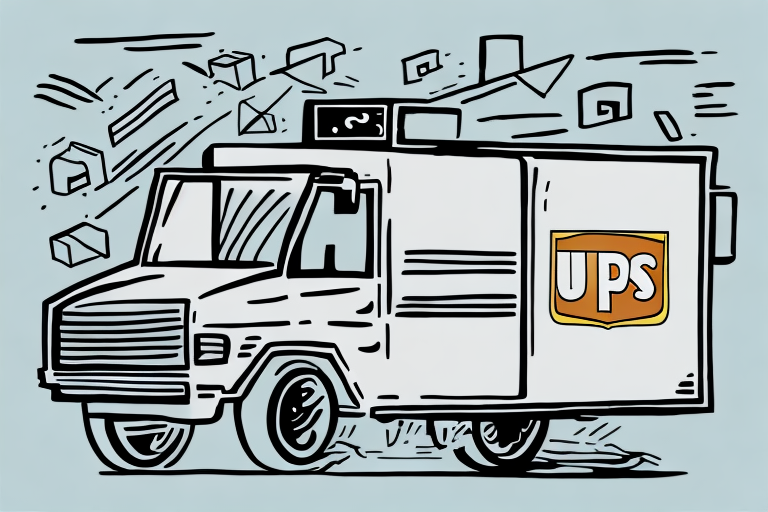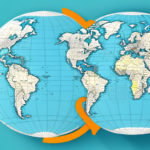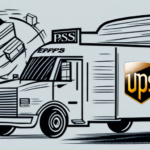Why Can UPS Shipping Rates Be So Expensive?
When it comes to shipping packages and goods, UPS is a popular choice for millions of businesses and individuals worldwide. However, one common concern that many people have is why UPS shipping rates can often be so expensive. In this article, we'll take a closer look at the various factors that affect UPS shipping rates, the history of these rates, and how you can reduce your shipping costs.
Understanding the Factors that Affect UPS Shipping Rates
UPS shipping rates are determined by a range of different factors. These include:
- Distance: The farther the distance between the sender and recipient, the higher the shipping cost due to increased fuel and labor expenses.
- Package Size and Weight: Larger and heavier packages require more resources to transport, leading to higher rates.
- Delivery Speed: Faster delivery options, such as overnight or expedited shipping, typically cost more.
- Additional Fees and Surcharges: These can include fuel surcharges, residential delivery fees, and fees for special handling or oversized packages.
- Destination's Customs Regulations: International shipments may incur extra costs for customs clearance, duties, and taxes.
For example, shipping a large, heavy item across the country within a short timeframe will cost significantly more than sending a small, lightweight parcel within the same region without a strict delivery deadline. Additionally, certain items may require special handling or packaging, further increasing the cost.
International shipments are also subject to customs regulations. Fees vary based on the value and type of goods, as well as the countries of origin and destination.
Understanding these factors can help you make informed decisions to minimize your shipping costs.
Exploring the History of UPS Shipping Rates
The cost of shipping with UPS has evolved over the years. Rates typically increase due to factors such as inflation, rising fuel costs, and increased demand for shipping services. In recent years, UPS has introduced new pricing models and surcharges to respond to changing market conditions and the rise of e-commerce.
One significant change occurred in 2015 when UPS introduced dimensional weight pricing. This model considers both the size and weight of a package, addressing the trend of shipping larger, lightweight packages commonly seen in e-commerce. This adjustment helped UPS manage operational costs more effectively.
Additionally, UPS has invested heavily in technology and infrastructure, including automated sorting systems and delivery drones. These investments aim to streamline operations and reduce costs, potentially passing savings on to customers and enhancing service efficiency. According to a [UPS sustainability report](https://www.ups.com/us/en/services/sustainability.page), their technological advancements have improved delivery accuracy and reduced carbon emissions.
How Do UPS Shipping Rates Compare with Competitors?
While UPS is a well-known shipping carrier, other companies like FedEx and USPS also offer competitive rates and services. When comparing shipping costs, consider the specific needs of your shipment, including distance, package size and weight, and required delivery timeframes.
For example:
- FedEx: Offers a money-back guarantee on express services, which can be beneficial for time-sensitive shipments.
- USPS: Provides flat-rate boxes that can be more cost-effective for heavier packages, regardless of distance.
It's crucial to research and compare all available options to find the best fit for your shipping needs. Tools like shipping comparison platforms can help you evaluate the best option based on your specific requirements.
The Impact of Distance on UPS Shipping Rates
Distance is a primary factor influencing UPS shipping rates. The further a package must travel, the higher the cost due to increased fuel consumption and labor. Here's how distance affects shipping:
- Domestic Shipping: Costs increase progressively with distance. Shipping from New York to Los Angeles will cost more than shipping within the same state.
- International Shipping: Long-distance international shipments incur additional expenses like customs fees, longer transit times, and higher fuel costs.
For instance, shipping a package from the U.S. to Europe will generally be more expensive than shipping domestically due to the added complexities and distances involved.
Additionally, remote or rural areas may incur higher shipping costs due to limited delivery infrastructure and longer delivery routes.
The Role of Package Size and Weight in Determining UPS Shipping Rates
The size and weight of a package are crucial in determining UPS shipping rates. UPS utilizes a dimensional weight calculation to account for packages that are large but lightweight. This means that a package with significant volume may be charged at a higher rate based on its size rather than its actual weight.
For example, a lightweight but bulky package might cost more to ship than a smaller, heavier one. Therefore, it's important to:
- Measure Accurately: Ensure that both dimensions and weight are correctly measured to avoid unexpected charges.
- Optimize Packaging: Use appropriately sized boxes to minimize dimensional weight charges.
According to UPS, optimizing package size can lead to substantial savings, especially for businesses with high shipping volumes.
How Delivery Speed Affects UPS Shipping Rates
The speed at which you need your package delivered significantly impacts UPS shipping rates. Faster delivery options, such as overnight or expedited shipping, typically cost more due to the additional resources required.
Factors influencing the cost based on delivery speed include:
- Transportation Methods: Expedited services may use air transportation, which is more expensive than ground shipping.
- Handling Requirements: Faster shipping often requires priority handling and dedicated resources.
However, it's important to balance cost with necessity. For non-urgent shipments, opting for standard ground shipping can lead to significant cost savings without compromising delivery reliability.
Why Guaranteed Delivery Dates Can Increase UPS Shipping Rates
UPS offers guaranteed delivery dates for certain shipments, ensuring that packages arrive by a specific date or time. This service is invaluable for businesses requiring timely deliveries, but it comes at a higher cost.
The increased rates are due to:
- Additional Resources: Ensuring timely delivery may require extra manpower, faster transportation methods, and optimized delivery routes.
- Priority Handling: Guaranteed services often take precedence over standard shipments, leading to higher operational costs.
For long-distance shipments, the cost of meeting guaranteed delivery dates increases as more resources are required to maintain the delivery schedule.
The Importance of Location in Determining UPS Shipping Rates
The location of both the sender and the recipient plays a significant role in determining UPS shipping rates. Shipping to remote or rural areas can be more expensive due to the lack of efficient delivery infrastructure and longer delivery routes.
Additionally, international shipments introduce complexities such as:
- Customs Duties and Taxes: International shipping often involves additional fees based on the shipment's value and type of goods.
- Regulatory Compliance: Different countries have varying import regulations, which can affect shipping costs.
Properly understanding the destination’s shipping environment can help in anticipating and managing these additional costs.
Understanding Additional Fees and Surcharges for UPS Shipments
UPS may apply additional fees and surcharges to certain types of shipments. These can include:
- Fuel Surcharges: Variable fees based on current fuel prices.
- Residential Delivery Fees: Extra charges for delivering to residential addresses.
- Oversize and Irregular Shaped Package Fees: Additional costs for packages that do not conform to standard size and weight limits.
- Special Handling Fees: Charges for items requiring special handling, such as fragile or hazardous materials.
Being aware of these potential additional costs can help you better estimate your shipping expenses and choose the most cost-effective options.
Tips for Reducing Your Costs on UPS Shipping Rates
While UPS shipping rates can be expensive, there are several strategies you can employ to reduce your shipping costs:
- Consolidate Shipments: Combine multiple packages into a single shipment to save on per-package fees.
- Ship During Off-Peak Times: Rates may be lower during slower times of the year or week.
- Choose Slower Delivery Speeds: Opting for standard ground shipping instead of expedited services can lead to significant savings.
- Use Flat-Rate Shipping Options: Utilize UPS’s flat-rate boxes for heavier items to take advantage of predictable pricing.
- Negotiate Rates: Businesses with high shipping volumes may qualify for discounted rates by negotiating directly with UPS.
- Utilize Third-Party Shipping Software: Tools like ShipStation or Stamps.com can help compare rates and find discounts.
Implementing these strategies can help you manage and reduce your overall shipping expenses effectively.
How to Choose the Best UPS Service for Your Needs
Selecting the right UPS service depends on your specific shipping requirements. Consider the following factors:
- Delivery Speed: Determine how quickly your package needs to arrive.
- Package Size and Weight: Choose a service that accommodates your package’s dimensions and weight.
- Destination: Consider whether you’re shipping domestically or internationally.
- Budget: Balance your need for speed and reliability with your budget constraints.
- Additional Services: Evaluate if you need services like package tracking, insurance, or special handling.
Comparing different UPS services and pricing options can help you find the best match for your specific needs and budget. For a comprehensive comparison, refer to UPS’s [official services page](https://www.shipscience.com/understanding-ups-shipping-rates-for-your-business-2/).
Comparing the Pros and Cons of Different UPS Shipping Options
UPS offers a variety of shipping options, each with its own set of advantages and disadvantages:
- UPS Ground:
- Pros: Cost-effective for non-urgent shipments; reliable delivery times.
- Cons: Slower delivery compared to air services.
- UPS Air:
- Pros: Faster delivery times; ideal for time-sensitive shipments.
- Cons: More expensive; higher fuel consumption.
- UPS Expedited:
- Pros: Balances speed and cost; suitable for urgent but not overnight deliveries.
- Cons: Higher cost than standard ground shipping.
- UPS International:
- Pros: Extensive global network; various delivery speed options.
- Cons: Subject to international customs and additional fees.
Weighing the pros and cons of each option will help you choose the most appropriate and cost-effective solution for your shipping needs.
How Technology is Changing the Landscape of UPS Shipping Rates
Advancements in technology are transforming UPS’s operations and may influence future shipping rates:
- Automation and Robotics: Automated sorting systems and robotics increase efficiency, potentially reducing operational costs.
- Artificial Intelligence (AI): AI-driven logistics optimize delivery routes, improving speed and reducing fuel consumption.
- Delivery Drones: Emerging drone technology could lower delivery costs and increase coverage, especially in remote areas.
- Online Shipping Platforms: Enhanced online tools make it easier for customers to compare rates, purchase shipping labels, and track packages, increasing overall efficiency.
These technological innovations not only streamline operations but also have the potential to lower shipping costs in the long term, making UPS more competitive in the logistics market.
The Future of UPS Shipping: What to Expect and How to Prepare
As e-commerce continues to grow, UPS and other shipping carriers are expected to continue adapting to meet evolving customer needs. Key trends to anticipate include:
- Sustainability Initiatives: Increased focus on reducing carbon emissions and utilizing sustainable packaging materials.
- Enhanced Automation: Further integration of AI and robotics to improve efficiency and reduce costs.
- Expanded Use of Drones: Growth in drone delivery services for faster and more flexible shipping options.
- Improved Customer Experience: More personalized and transparent shipping options through advanced tracking and customer service technologies.
To prepare for the future of UPS shipping:
- Stay Informed: Keep up with the latest trends and technological advancements in the shipping industry.
- Adapt Your Shipping Strategies: Implement flexible shipping options and leverage new technologies to enhance efficiency.
- Partner with Reliable Providers: Work with shipping partners that prioritize innovation and customer satisfaction.
By staying proactive and embracing these changes, businesses and individuals can ensure they remain competitive and efficient in their shipping practices.




















